The Ultimate Ski Goggles Buyer’s Guide
When it comes to hitting the slopes, having the right gear is crucial for a safe and enjoyable experience. Ski goggles, in particular, are an essential part of your equipment. They not only protect your eyes from harsh weather conditions but also enhance your visibility, ensuring you can navigate the mountain terrain with confidence.
Let’s dive into our comprehensive buyer’s guide that breaks down the essentials, helping you make an informed decision about the perfect pair of ski goggles.
Fit
Your ski goggles should fit like a glove, providing both comfort and protection against the elements. Here’s what you need to know:
- Face Fit: A proper face fit is essential. The foam of the goggles should sit snugly against your face, leaving no gaps. Gaps can allow snow and wind to creep inside, leading to discomfort and reduced visibility.
- Helmet Fit: Always try on your goggles with your helmet. While most people prefer to wear the goggle strap over the helmet, some opt for wearing the strap under the helmet (over a beanie) for a snugger fit or different style. Make sure there’s no gap between the top of the goggles and the helmet, commonly referred to as the “Jerry gap.” A small gap is okay if your forehead is covered by foam or helmet liner, but a bigger gap can result in a frosty forehead.
- Spectacles Compatibility: For wearers of prescription glasses, look for goggles with OTG (over the glasses) design. These goggles have cutouts in the foam and frame to accommodate glasses legs. Pay attention to the width these goggles can support. For wider spectacles it may be necessary to slightly bend the ski goggles when putting them over the spectacles. Most OTG goggles can be used by people not wearing glasses without any disadvantages.

Comfort
A full day on the slopes demands comfort. Pay attention to these comfort-enhancing features:
- Triple-Layer Foam: Opt for goggles with a three-layer foam design. Not only does this provide a snug fit that contours to your face, but it also distributes pressure evenly, preventing discomfort from pressure points. Besides providing a soft touch on your skin, the outermost layer also absorbs sweat.
- Stay Put: Anti-slip stripes might seem like a small detail, but they play a significant role in your comfort. They keep the goggle strap securely on your helmet, preventing any unwanted slipping or shifting during your runs or after a fall.
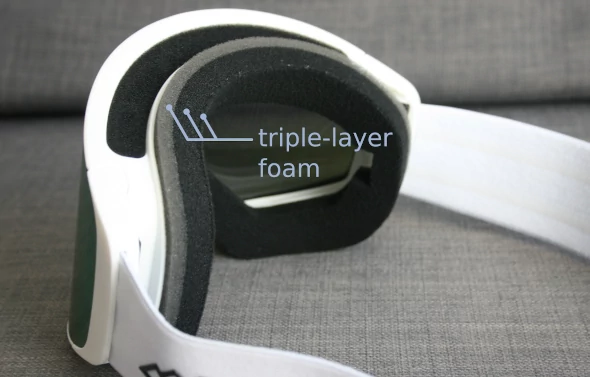
Frame
The frame of your goggles impacts both durability and performance. Here’s what to consider:
- Material Matters: Choose goggles with frames made from high-quality materials like TPU. These materials are not only durable but also remain flexible and impact-resistant, even in freezing temperatures.
- Wider View: Larger frames with bigger lenses aren’t just about looking stylish. They offer a wider field of view, allowing you to take in more of your surroundings and anticipate changes in terrain more effectively.
- Ventilation: Effective ventilation is crucial to prevent fogging. Look for goggles with plenty of ventilation openings at the top and bottom of the frame. This design helps maintain airflow and reduces the likelihood of fog obstructing your vision.
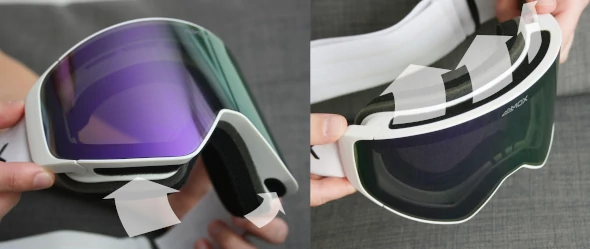
Defeating Fog
Sweating and differences in temperature between the inside and outside of goggles can cause its lens to fog up, which can be a true nightmare. Therefore the following properties are a must:
- Double-Layer Lenses: These help reduce fogging by creating a barrier between the cold outside air and the warmth of your face from the inside.
- Anti-Fog Treatment: Many goggles come with anti-fog coatings on the inner lens to further prevent fog buildup.
- Block Snow: Ventilation openings are important, but they should also be covered by foam to prevent snow and water droplets from finding their way into the frame. Cheaper goggles might lack this protective feature, so keep an eye out for it.
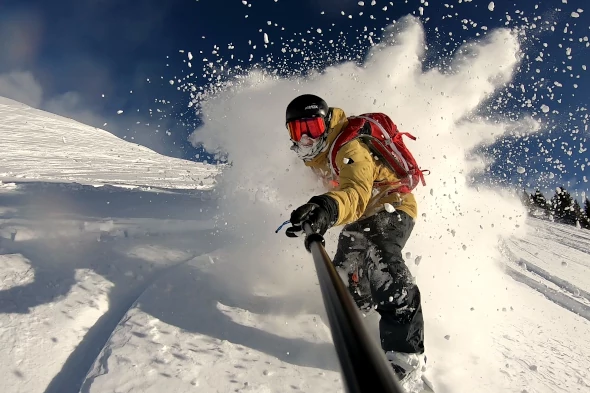
Lens Properties
The lens is where technology truly shines in ski goggles. Understanding lens properties is essential:
- VLT: Visual Light Transmission (VLT) is a rough indicator of how much light the lens allows to pass through. Lower VLT lenses are suitable for bright days, while higher VLT lenses work better in low-light conditions.
- Beyond VLT: While VLT is important, it’s not the whole story. Consider the lens tint and technologies like Retinex, Prizm, or ChromaPop that enhance contrast and optimize performance for specific conditions.
- Manufacturer Guidance: Lens recommendations provided by the manufacturer are your best bet for picking the right lens for the conditions you’ll be skiing or snowboarding in. For example, have a look at our lens guide.
- Photochromic Lenses: Some goggles feature photochromic lenses that adapt to changing light conditions. While they seem convenient, they do not provide optimal performance across a wide range of conditions, because they only change the VLT rate and do not adapt the other crucial optical properties.
- Polarized Lenses: You might be familiar with polarized lenses from sunglasses. While they’re great for reducing glare on water or roads, they’re not ideal for snow environments. They can filter out subtle light differences necessary for perceiving ground contours.
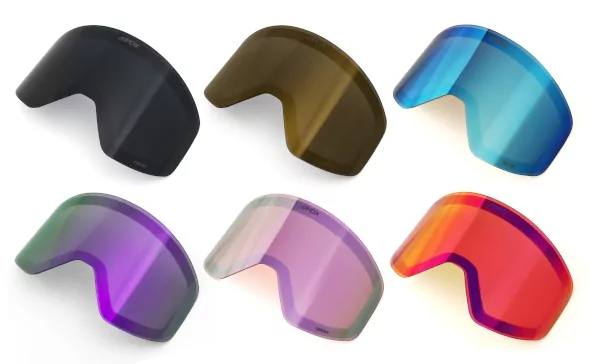
One Lens or Interchangeable Lenses?
Choosing between a single lens and interchangeable lenses can be a game-changer:
- All-Rounder Myth: If you’re looking for the best visibility under all conditions, then don’t fall for the idea of an all-rounder lens, because they are always a compromise. Different weather conditions demand specific optical properties for optimal visibility.
- Interchangeable Lens Advantage: To be best prepared for different conditions, opt for goggles with interchangeable lenses for versatility. This means that you do not have to buy multiple goggles, but only need additional lenses that you can easily take with you on the slopes.
- Lens Damage Relief: Another advantage of interchangeable lenses, is that you only need to replace a damaged lens, not the entire goggle.
- Magnetic Quick Swap: A few goggles even come with a magnetic quick-change system, allowing you to adapt to changing conditions swiftly and without hassle. Whereas with conventional goggles changing the lens can be quite fiddly, especially when it is cold and snowing, a magnetic system allows you to change the lens easily within seconds without having to remove the goggles from your face.
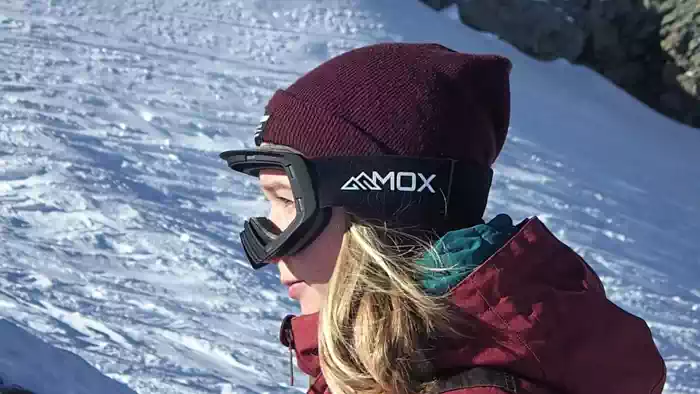
In Conclusion: Bringing Performance to the Slopes with MOX
As you prepare to take on the slopes, consider the revolutionary goggles line of MOX – a brand dedicated to redefining your skiing and snowboarding experience. Our goggles embody every aspect highlighted in this guide, offering unparalleled comfort, functionality, and style at an affordable price. MOX Goggles boast advanced technologies, anti-fog features, and precision engineering, ensuring optimal clarity in varying conditions. While we’re proud of our product, we wrote this article with the purpose of it being a useful resource, applicable to any brand you choose.
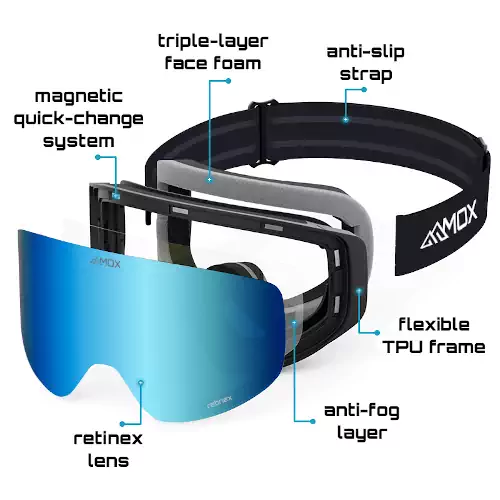
Your journey down the slopes is only as good as the gear you’re using. By focusing on the right fit, comfort, frame quality, anti-fog features, lens specifics, and lens versatility, you’ll be well-equipped to tackle the mountain with confidence. Armed with this knowledge, you’re ready to experience skiing or snowboarding like never before – with clear vision, comfort, and a sense of adventure that’s second to none. Gear up and enjoy the thrill of the slopes with all the clarity and confidence you need!